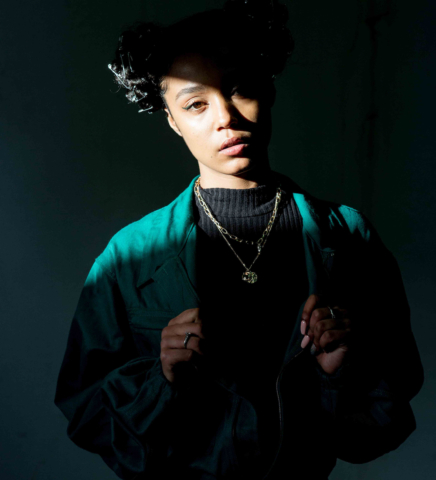Beauty from Fire
By Jake Gloth
Through the destruction of flames, fire creates beauty. With the cooling of fiery magma comes the dazzling crystal. This violent force can create and destroy; it can sparkle and flourish. This is what the 13 artists shortlisted by Prix Pictet, the world’s leading prize for photography and sustainability, explore in the new “Fire” exhibit at the Victoria and Albert Museum in London.
In the ninth iteration of the Prix Pictet prize, ‘fire’ was chosen as the theme in response to the flames all around the world. Sir David King, Chairman of the jury that decides the winner, said “if ever there was a time for the Prix Pictet Prize to take up the theme of fire, that time is now.” He sees the exhibit as a chance to confront the tragedies and catastrophes around the world.
These photographs delve into devastating forest fires, burned photographs, the emotions of flames, and the beauty of fire.
In LA Fires, photographer Mark Ruwedel confronts the flames that have ravaged California. These black and white stills expose a grim and bleak reality left in the wake of the La Tuna fire of 2017.

While Ruwedel’s work brings forest fires into perspective, Brent Stirton’s Burns Capital Of The World brings to light the reality of burn victims in India. Stirton’s work follows the story of a 13-year-old Indian girl, Kumkum Chowdhary, who was burned by a gas canister explosion. The photos present the story of her rebirth as her face is reconstructed by Dr. Subodh Singh.

Another story of rebirth is shown by Lisa Oppenheim’s Smoke. Oppenheim’s work began when she discovered an interesting photograph in the German National Archives. It displayed several still life paintings stolen by the Nazis in 1942 from a gallery in Paris, all of which are still missing. In order to give new life to what was lost, Oppenheim remastered the paintings and used a flame to solarize the image, a process in photography that creates a dreamy black and white effect.

In an effort to show things that have been lost, Joana Hadjithomas and Khalil Joreige wrestle with the destruction of Beirut, Lebanon in Wonder Beirut. In this series, they scorched postcards from 1960s Beruit in order to disfigure the idyllic scenery. The new burnt images are meant to depict the recent turmoil in the Lebanese capital.

Like Wonder Beruit, destruction is represented in Mak Remissa’s Left 3 Days. This work uses tiny black cut-outs masked by smoke to illustrate the emotional anguish and violence associated with the genocidal Khmer Rouge regime in Cambodia.

Sally Mann, the winner of this year’s Prix Pictet prize, chose to reflect on tragedies of the past in her work: Blackwater. In these dark images of a burned swamp, she examines the racial history of the American south. The photos are of the Great Dismal Swamp, a place that was famous during the colonization of America as a haven for escaped African slaves. Recently, a fire consumed the swamp, which Mann believes “epitomizes the great fire of racial strife in America”.

While fighting fire with fire is traditionally a poor idea, it is exactly what Carla Rippey is suggesting in Immolation, which means death by fire. In each part of the series, she explores different sacrificial aspects of fire. In Fire, she shows a match creating an animated and engulfing flame that represents “human emotions out of control”.

Christian Marclay deals with fiery emotions in his series Fire. Using torn fragments from comic books, movie stills and internet images, Marclay created screaming faces. This empathetic piece embodies the explosion of emotions. It is meant to reflect on feelings of fear and anxiety built by the pandemic, democratic troubles, environmental concerns, and systemic racism.

Fabrice Monteiro looks at anxiety surrounding the destruction of nature in The Prophecy. This series uses exquisite costumes composed of refuse and burning backgrounds to showcase the degradation of the environment. In each photo, humans choke on plastic masks: a prison of their own design.

While Monteiro represents fire as the destroyer, David Uzochukwu uses it to show rebirth. In The Wake focuses on what is left after suffering, and how what remains comes to reconstruct itself.

Daisuke Yokota took the meaning of fire as a creator more literally with Matter/Burn Out. This series is an extension of Yokota’s Matter/Vomit, which was composed of 100,000 photographs covered in wax. After Matter/Vomit’s exhibition in 2015, the work was burned, and the process was photographed. Matter/Burn Out is the manipulation of these “burn out” photos into a new work.

In a spectacular conclusion, Rinko Kawauchi portrays the beauty of destruction with Hanabi. Kawauchi investigates the fantastic nature of fireworks and the joy they inspire. She sees fire as “both life and death. Beauty that dissipates in an instant”.

So, like the crystal that is forged in flames, these artists have used fire to create something amazing.
If you’d like to learn more about Prix Pictet’s Fire exhibit, you can check out their website: prixpictet.com. You may see the photographs for yourself at Victoria & Albert Museum in London from 16 Dec. 2021 to 9 Jan. 2022.
If you enjoyed this article, you may also like “Crystalline Creations“.





